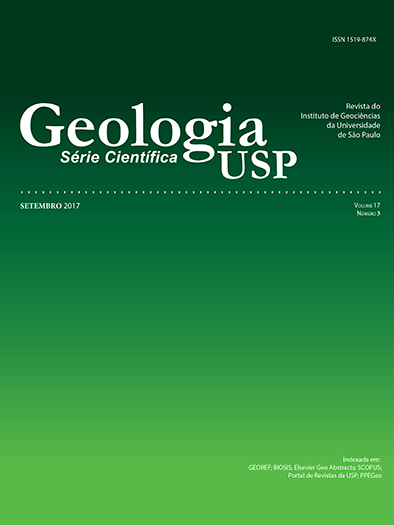Geographic boundaries delimitation proposal for highways Environmental Impact Studies: approaching dynamic surficial process
DOI:
https://doi.org/10.11606/issn.2316-9095.v17-129123Keywords:
Dynamic surficial process, Physical environment, Geographic boundaries, Highways.Abstract
The aim of this paper is to evaluate the geographic boundaries (“influenced and study areas”) delimitation criteria on highways Environmental Impact Studies (EIS), focusing on the physic environment associated with dynamic surficial process. Means to achieve, it was analyzed four environmental licenses proceedings of Tamoios’ highway, located in north coast of São Paulo State in Brazil. Outcomes show that this split of the environmental licenses proceedings into four EIS in a short time does not enable the whole feasibility assessment, including the geographic boundaries delimitation. There was not a discussion about the criteria used to define these areas, so it is not possible to understand the proposed limits, especially because they are land bands nearby the linear construction. In addition, the limitation did not examine physic and biotic environment and socioeconomic components. As a suggestion, the delimitation criteria of the closest geographic boundaries (ADA) must use dynamic surficial process information and geomorphologic, geology, pedology and geotechnics components. Likewise, the proposal is to restrict the larger geographic boundaries to watershed limits for linear projects. Another important topic is to discuss the delimitation issue during the EIS scope, just before the environmental license begin.
Downloads
Downloads
Published
Issue
Section
License
Authors who publish in this journal shall comply with the following terms:
- Authors keep their copyright and grant to Geologia USP: Série Científica the right of first publication, with the paper under the Creative Commons BY-NC-SA license (summary of the license: https://creativecommons.org/licenses/by-nc-sa/4.0 | full text of the license: https://creativecommons.org/licenses/by-nc-sa/4.0/legalcode) that allows the non-commercial sharing of the paper and granting the proper copyrights of the first publication in this journal.
- Authors are authorized to take additional contracts separately, for non-exclusive distribution of the version of the paper published in this journal (publish in institutional repository or as a book chapter), granting the proper copyrights of first publication in this journal.
- Authors are allowed and encouraged to publish and distribute their paper online (in institutional repositories or their personal page) at any point before or during the editorial process, since this can generate productive changes as well as increase the impact and citation of the published paper (See The effect of Open Access and downloads on citation impact).





